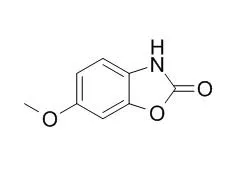| In vitro: |
| Arch Pharm Res. 2015 May;38(5):620-7. | | Suppressive effects of coixol, glyceryl trilinoleate and natural products derived from Coix Lachryma-Jobi var. ma-yuen on gene expression, production and secretion of airway MUC5AC mucin.[Pubmed: 24733673] | In this study, we investigated whether natural products including Coixol derived from Coix Lachryma-Jobi var. ma-yuen affect MUC5AC mucin gene expression, production and secretion from airway epithelial cells.
METHODS AND RESULTS:
Confluent NCI-H292 cells were pretreated with oleic acid, linoleic acid, glyceryl trilinoleate, beta-stigmasterol or Coixol for 30 min and then stimulated with PMA (phorbol 12-myristate 13-acetate), EGF (epidermal growth factor) or TNF-α (tumor necrosis factor-α) for 24 h. The MUC5AC mucin gene expression, mucin protein production and secretion were measured by RT-PCR and ELISA. The results were as follows: (1) Oleic acid, linoleic acid, glyceryl trilinoleate, beta-stigmasterol and Coixol inhibited the expression of MUC5AC mucin gene induced by PMA from NCI-H292 cells; (2) Oleic acid, linoleic acid, glyceryl trilinoleate, beta-stigmasterol and Coixol also inhibited the production of MUC5AC mucin protein induced by the same inducers from NCI-H292 cells; (3) Coixol inhibited the expression of MUC5AC mucin gene and production of MUC5AC mucin protein, induced by EGF or TNF-α from NCI-H292 cells; (4) Coixol decreased PMA-induced MUC5AC mucin secretion from NCI-H292 cells.
CONCLUSIONS:
This result suggests that Coixol, the characteristic component among the examined five natural products derived from C. Lachryma-Jobi var. ma-yuen, can regulate gene expression, production and secretion of mucin, by directly acting on airway epithelial cells. | | Nihon Yakurigaku Zasshi. 1981 Mar;77(3):245-59. | | Behavioral and EEG effects of coixol (6-methoxybenzoxazolone), one of the components in Coix Lachryma-Jobi L. var. ma-yuen Stapf.[Pubmed: 7052357] | Coixol (6-methoxybenzoxazolone) contained in Coix Lachryma-Jobi L. var. ma-yuen Stapf was compared with chlorzoxazone with respect to behavioral and EEG effects in mice and rats.
METHODS AND RESULTS:
Coixol 50-100 mg/kg, i.p. decreased locomotor activities of both species and produced hypothermia in rats. These effects of Coixol were the same in potency as chlorzoxazone given in the same dose. Coixol was approximately twice as potent as chlorzoxazone in potentiating thiopental-induced sleep. This compound attenuated the writhing syndrome induced by 1% acetic acid and increased the threshold to jumping response induced by foot shock, to the same degree as seen with chlorzoxazone. Coixol was equipotent to chlorzoxazone in preventing convulsions induced by maximal electro-shock, while it was about 1.5 times more potent than chlorzoxazone in suppressing pentylenetetrazol-induced convulsion. Coixol 20-100 mg/kg inhibited the lever pressing response of hypothalamic self-stimulation in rats. In rats with chronically implanted electrodes, Coixol 50-100 mg/kg induced drowsy patterns on the spontaneous EEG. The EEG arousal response to the external auditory stimulation was inhibited by the same doses of Coixol, whereas it failed to suppress the arousal response to the midbrain reticular stimulation.
CONCLUSIONS:
These results indicate that Coixol has pharmacological properties qualitatively similar to chlorzoxazone and acts as a central muscle relaxant with an anti-convulsant effect. | | Molecules . 2020 Feb 18;25(4):894. | | Coixol Suppresses NF-κB, MAPK Pathways and NLRP3 Inflammasome Activation in Lipopolysaccharide-Induced RAW 264.7 Cells[Pubmed: 32085388] | | Abstract
Coixol, a plant polyphenol extracted from coix (Coix lachryma-jobi L.var.ma-yuen Stapf), has not been investigated for its anti-inflammatory effect. In this study, using a lipopolysaccharide (LPS)-induced macrophage cell model, we observed that Coixol can effectively reduce the expression of interleukin (IL)-1β, IL-6, IL-18, tumor necrosis factor (TNF)-α, nitric oxide (NO), inducible nitric oxide synthases (iNOS), and cyclooxygenase (COX)-2, but had no effect on the expression of the anti-inflammatory mediator IL-10. Furthermore, we found that Coixol inhibits mitogen-activated protein kinases (MAPKs), nuclear transcription factor κ B (NF-κB) pathways, and NOD-like receptor protein (NLRP) 3 inflammasome activation. In conclusion, the present study demonstrates that Coixol exerts certain anti-inflammatory effects by inhibiting the expression of pro-inflammatory mediators in vitro. The mechanism of this effect was in part related to its ability to inhibit the activation of NF-κB, MAPKs pathways, and NLRP3 inflammasome.
Keywords: MAPK pathway; NF-κB pathway; NLRP3 inflammasome; anti-inflammatory; coix; Coixol; polyphenol. |
|






 Cell. 2018 Jan 11;172(1-2):249-261.e12. doi: 10.1016/j.cell.2017.12.019.IF=36.216(2019)
Cell. 2018 Jan 11;172(1-2):249-261.e12. doi: 10.1016/j.cell.2017.12.019.IF=36.216(2019) Cell Metab. 2020 Mar 3;31(3):534-548.e5. doi: 10.1016/j.cmet.2020.01.002.IF=22.415(2019)
Cell Metab. 2020 Mar 3;31(3):534-548.e5. doi: 10.1016/j.cmet.2020.01.002.IF=22.415(2019) Mol Cell. 2017 Nov 16;68(4):673-685.e6. doi: 10.1016/j.molcel.2017.10.022.IF=14.548(2019)
Mol Cell. 2017 Nov 16;68(4):673-685.e6. doi: 10.1016/j.molcel.2017.10.022.IF=14.548(2019)